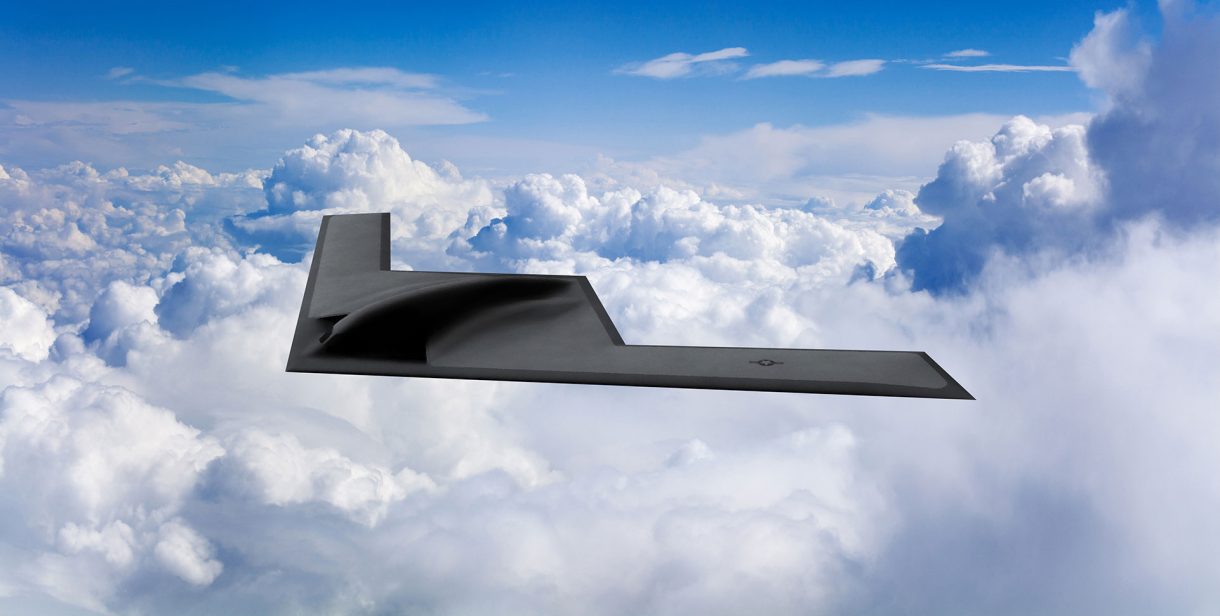The US Air Force has announced that the first B-21 stealth bomber will not take to the skies until 2023, pushing back the scheduled date by at least six months.
‘Choking China’ – India’s Strategic Islands Get A $3.4B Investment As QUAD Allies Look To Tame The Dragon
On 20 May, a service spokeswoman stated, “recently, the Air Force released a new estimate for the first flight; projected for next year, 2023.” The service stated that it is attempting to be as “transparent” about the project as possible and that “this estimate reflects the current status of the project.”
The service did not explain the delay. However, due to supply chain concerns and manpower shortages, many other high-profile programs, such as Boeing’s T-7A trainer, have recently been delayed.
The B-21 “remains within its acquisition program baseline for cost, schedule, and performance established at Milestone B award, which was based on an independent government estimate for the program,” the spokeswoman said.

The B-21 Raider is a penetrating strike bomber with stealth capabilities that are being developed for the new United States Air Force. The futuristic warplane is dual-capable as it can deliver both conventional and nuclear weapons.
Northrop Grumman currently has six stealthy next-generation aircraft in various phases of development.
The announcement of postponement comes as the first B-21 Raider bomber, which underwent ground testing in March, was rumored to be preparing for its scheduled launch this year and subsequent first flight.
“China Is Watching” – With AI-Powered Satellites & Thousands Of Cameras, Can Beijing Strike Key US, UK Targets With Pinpoint Accuracy?
In early 2021, Randall Walden, head of the Rapid Capabilities Office, estimated that the B-21 would fly in “mid-2022.” In March, he claimed that the first flyable example was nearly complete and conducting outside calibration tests.
Details About The First Flight
“The B-21 program continues to ensure the first flight test aircraft is a high-quality build and production-representative, to drive an efficient flight test campaign and rapidly field this critical combat capability,” the spokeswoman said.
“As we bring out the B-21,” Air Force Chief of Staff Gen. CQ Brown said in September during Defense One’s online State of Defense conference, “we’ll do something special,” such as a ceremony for the unveiling or the follow-on first flight.
:quality(70)/cloudfront-us-east-1.images.arcpublishing.com/mco/JZDN7YTTIJF5NEILSRUVKW5MHY.JPG)
The service is attempting to be transparent with Congress and the public about the B-21. However, the Force also stated that it is “protecting sensitive program information from adversary exploitation.”
Members of the Senate and House Armed Services Committees have recently commended the B-21 as a well-managed and model acquisition. Sen. Tom Cotton (R-Ark.) recently described it as an “exquisitely run program.”
Lt. Gen. David S. Nahom told the House Armed Services Committee on May 19 that the service is considering buying up to 145 B-21 bombers. However, a full procurement plan has yet to be finalized since engineering and product development are still underway.
B-21: Key Specifications
The first B-21s would be manned, according to a Congressional Research Committee report, and an unscrewed model might be introduced a few years after initial operational capability (IOC). Following the IOC, the nuclear certification will take about two years.
The intended speed of the aircraft has not been specified. But, the B-21’s extended range, large payload, and budget restrictions imply that it will be subsonic. The size, stealth, structure, and onboard sensors of the Raider are yet unknown.
The engines on the B-21 are placed near the wing root, at the intersection of the wing and fuselage. The Raider’s engine air intakes are slanted, and the plane has overwing exhausts to mask the four engines’ infrared signal.
Officials from Northrop Grumman have described the B-21 as a major upgrade over the B-2 in terms of “survivability and aero-performance,” emphasizing the stealth coating’s “revolutionary” maintainability.
The plane will most likely be a heavy strategic bomber capable of carrying both nuclear and conventional weapons. The US Air Force plans to equip the B-21 with the next-generation cruise missile – Long-Range Stand-Off (LRSO), for nuclear operations.
The warplane will be capable of carrying nuclear gravity bombs from the B61 family, including the new B61-12 with “dial-a-yield” capability.
Furthermore, the Raider will be equipped with the JASSM-ER conventional cruise missile and 2,000-pound GBU-31 Joint Directed Attack Munition satellite-guided bombs for conventional strikes.
Future modifications should also be reasonably simple to integrate because of the open-architecture design. This may also guarantee that the bomber can respond to a wide range of new and diverse missions.
- Contact the author at ashishmichel@gmail.com
- Follow EurAsian Times on Google News




